
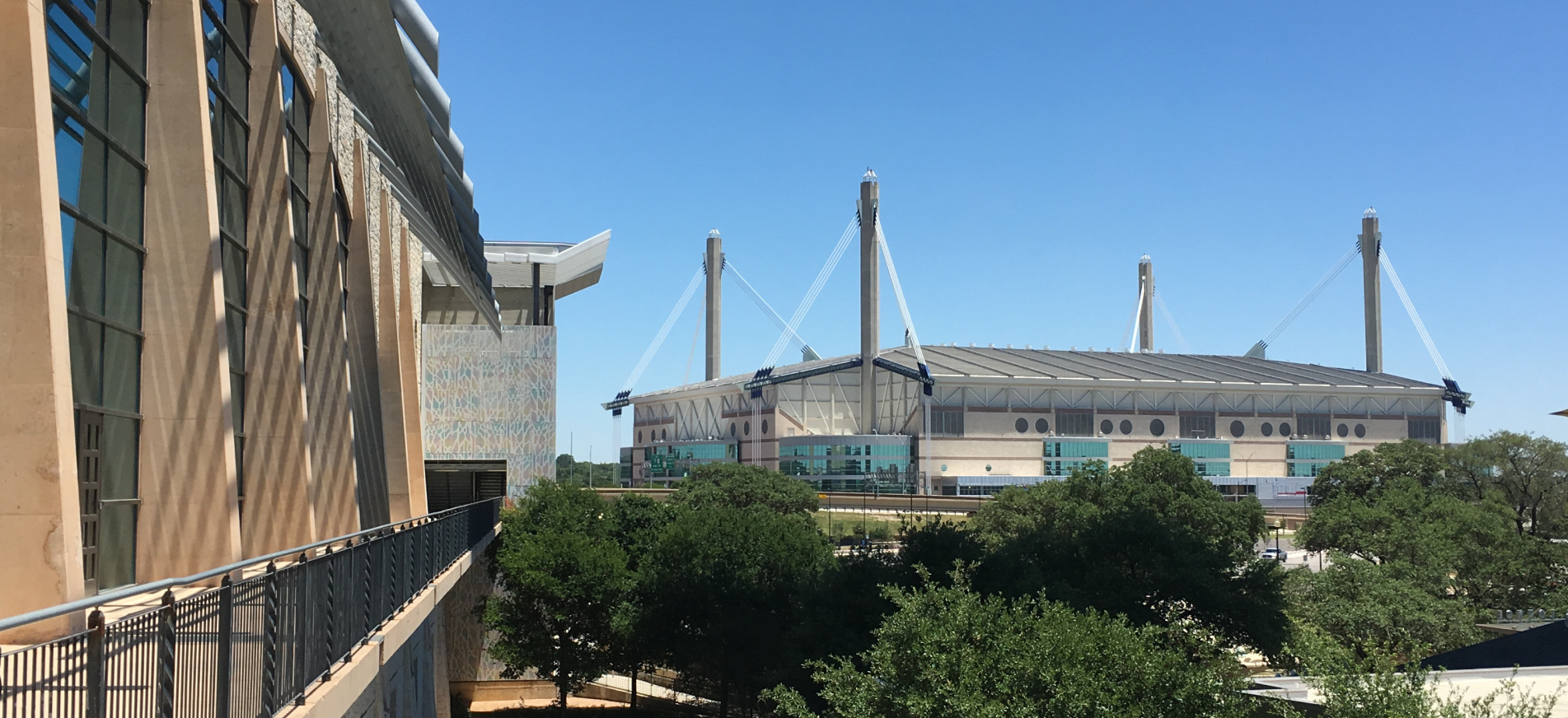
Project Marvel in Brief: A New Sports and Entertainment District Coming to San Antonio
Updated July 10, 2025 - Community Survey (scroll to end of article)
Updated May 30, 2025- Link to SA Speak Up (scroll to end of article)
Plans are being made for a new Sports and Entertainment District, dubbed Project Marvel, located in downtown San Antonio. Read on about the sites that are included, their estimated costs, their timelines for development (if known), and what will go to the public for a vote.
In two recent joint information sessions with Urban Land Institute and the American Institute of Architects, presentations were given on the status of the Sports and Entertainment District. Assistant City Manager Lori Houston gave an in-person presentation in March 2025. Then, in a follow-up Zoom presentation, Erika Ragsdale (Redevelopment Officer at the City of San Antonio) and Troy Elliott (Deputy Chief Financial Officer at the City of San Antonio) gave an update in April 2025. In the presentations, they were careful to mention that all information was,
“Subject to change based on finalization of feasibility study and other cost impacts such as inflation, available resources, negotiation with private partners, financial capacity analysis, and funding of other anchor projects.”
In attendance were stakeholders, developers, architects, contractors, and others involved in the development of San Antonio’s built environment.
Points of Interest
The sites involved in the Sports and Entertainment District include the Henry B. González Convention Center, John H. Wood, Jr. United States Courthouse (originally Confluence Theatre at Hemisfair ‘68), GSA Federal Building, Institute of Texan Cultures Building (originally Texas Pavilion), Alamodome, a new Convention Center Hotel, a landbridge over the IH-37 connecting Hemisfair and the Alamodome, as well as multiple connecting sites planned as potential multi-use developments. The River Walk is also accessible on-site, with an upgrade included in the development.
Henry B. González Convention Center Expansion (1-5 Year Implementation)
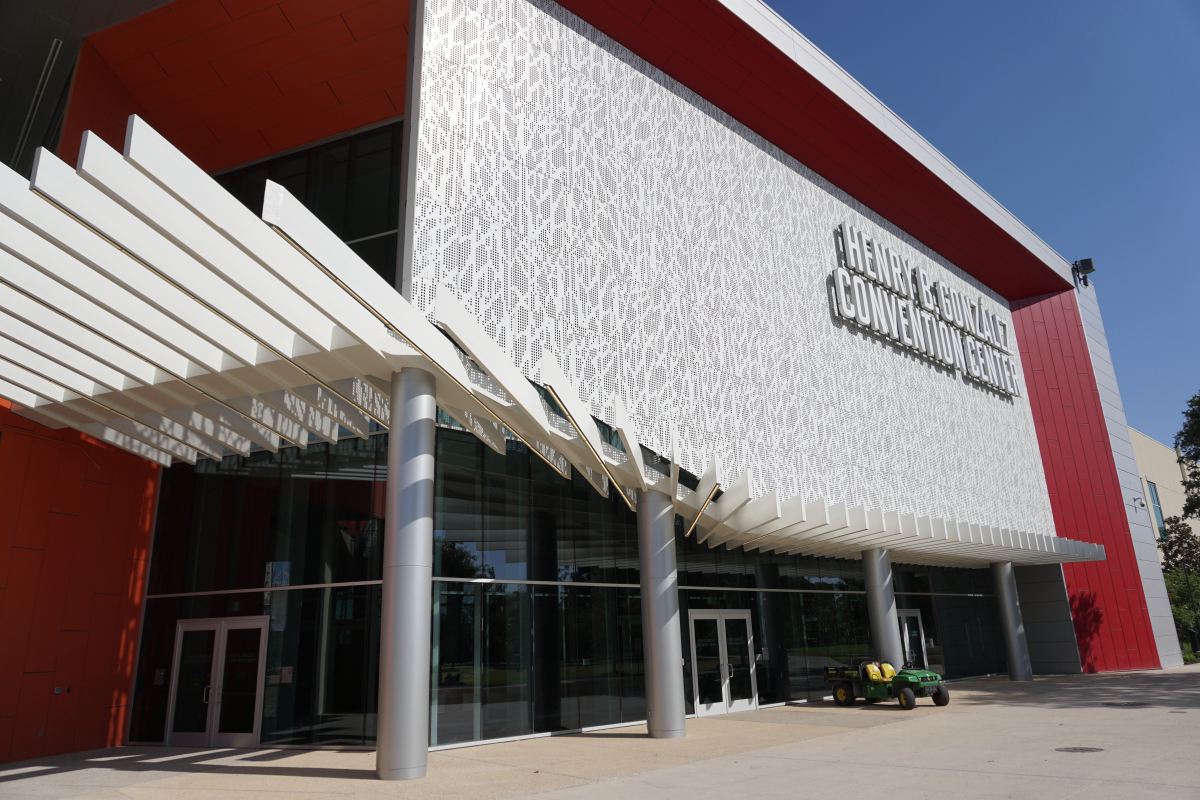
The first project to kick off in the Sports and Entertainment District will be the updates to the Henry B. González Convention Center. The plan includes a new banquet space, expanded exhibition spaces, and meeting rooms.
Estimated Construction Costs: $700-900 million.
Project Timeline: Design in 2026, construction in 2028.
Funding Sources: *HOT, *PFZ.
River Walk Access (1-5 Year Implementation)
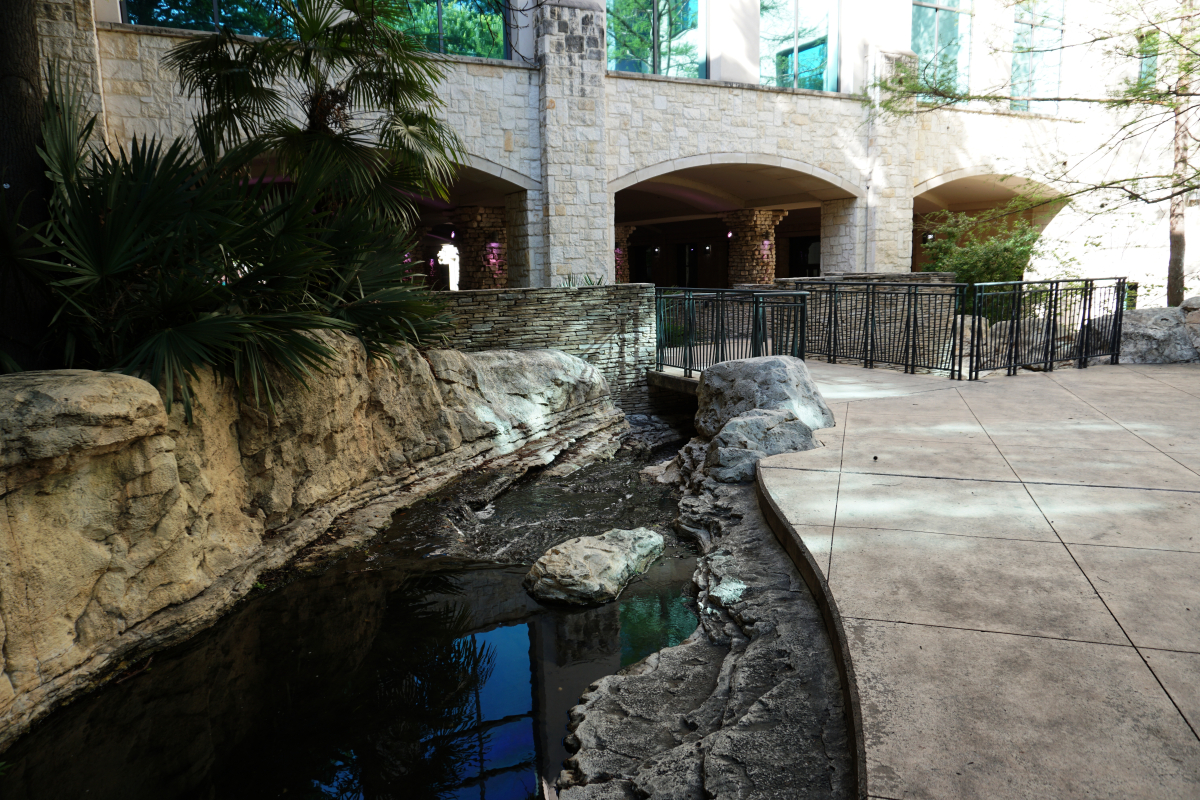
Located behind the Mexican Cultural Institute and the Universidad Nacional Autonoma de Mexico is The Grotto, near where riverboats turn around at the Henry B. González Convention Center. The current debate is that people cannot find this river access area due to minimal signage on the Hemisfair side. The proposed changes would involve enhanced wayfinding for visitors and a possible redesign.
The New Spurs Arena (1-5 Year Implementation)
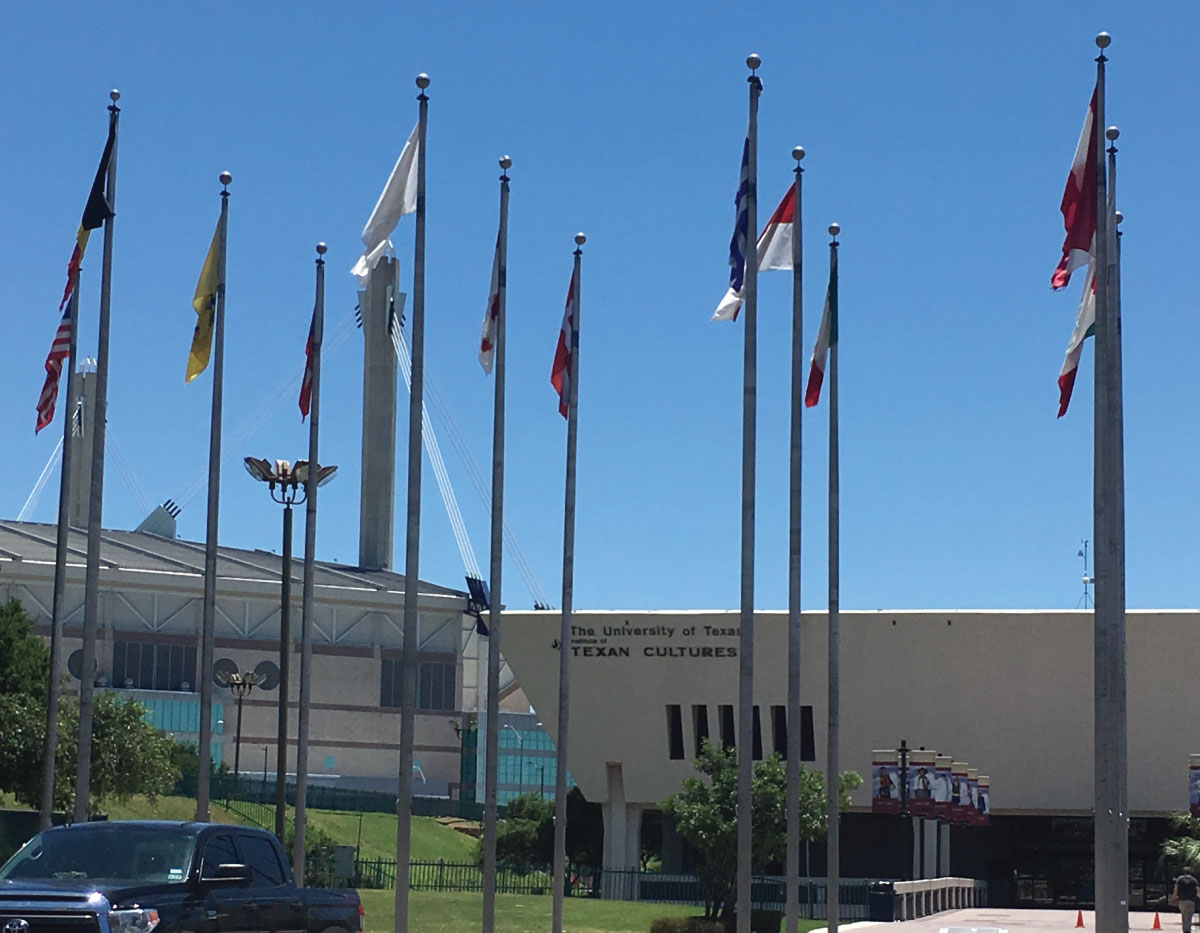
The site for a potential new Spurs Arena would be planned at the current location of the UTSA Institute of Texan Cultures Building, which is currently under demolition.
The timeline for the project remains unknown, as they have only recently entered into a Memorandum of Understanding (MOU) with CoSA/Bexar County and the Spurs organization regarding the property. Be on the lookout for a potential venue tax proposition in the November 2025 election regarding the future arena.
Estimated Construction Costs: $1.2 - 1.5 billion.
Project Timeline: Subject to the results of the MOU.
Site Estimated Value: $60 million.
Funding Sources: *PFZ, *TIRZ, private funding, Spurs organization, and venue taxes.
A Recent Public Poll by UTSA Center for Public Opinion Research
UTSA held a public poll in February 2025, asking what our residents thought of the proposed Sports and Entertainment District. The results of those polled showed a “tepid support”. Participants were asked, “Do you think the city and county should move forward with Project Marvel?” 41% said yes, 36% said no, 3% had no opinion, and 20% were not sure.
When asked, “Would you vote in favor of using funds from the venue tax to support construction of a new arena for the Spurs?”, 42% yes, 41% no, 2% no opinion, 15% not sure.
Alamodome Improvements (5-15+ Year Implementation)
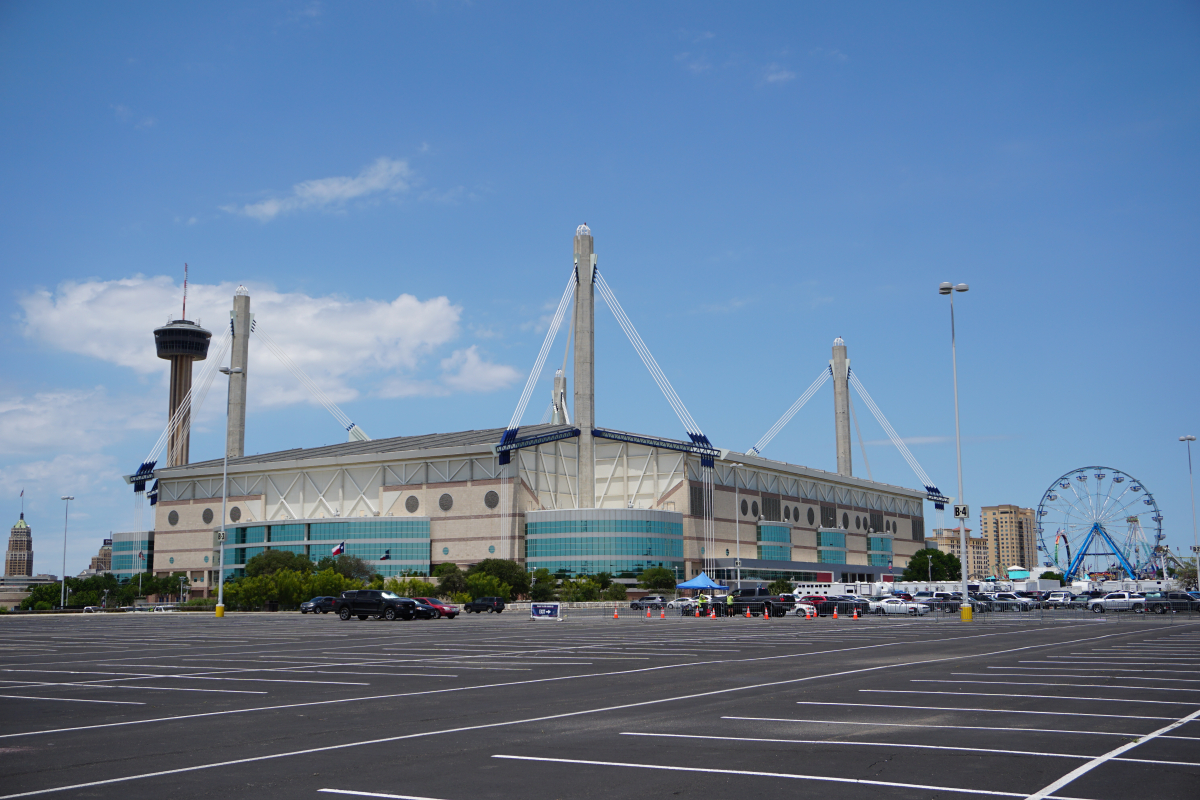
The Women’s Final Four will be hosted in the Alamodome in 2029. Lori Houston mentioned that the women’s college basketball organization informed the City of San Antonio that they will not return unless significant improvements to the Alamodome facilities are made.
In the Sports and Entertainment District, the Alamodome improvements will likely come last in the timeline (post-2029 Women’s Final Four) as it is one of the more expensive and complicated projects.
Construction Costs: Estimated at more than $1 billion.
Project Timeline: Unknown. Focused on operating and creative capital through 2035.
Proposed Funding Sources: *HOT, *PFZ, private equity, naming rights.
John H. Wood Jr. U.S. Courthouse/ Confluence Theatre (1-5 Year Implementation)
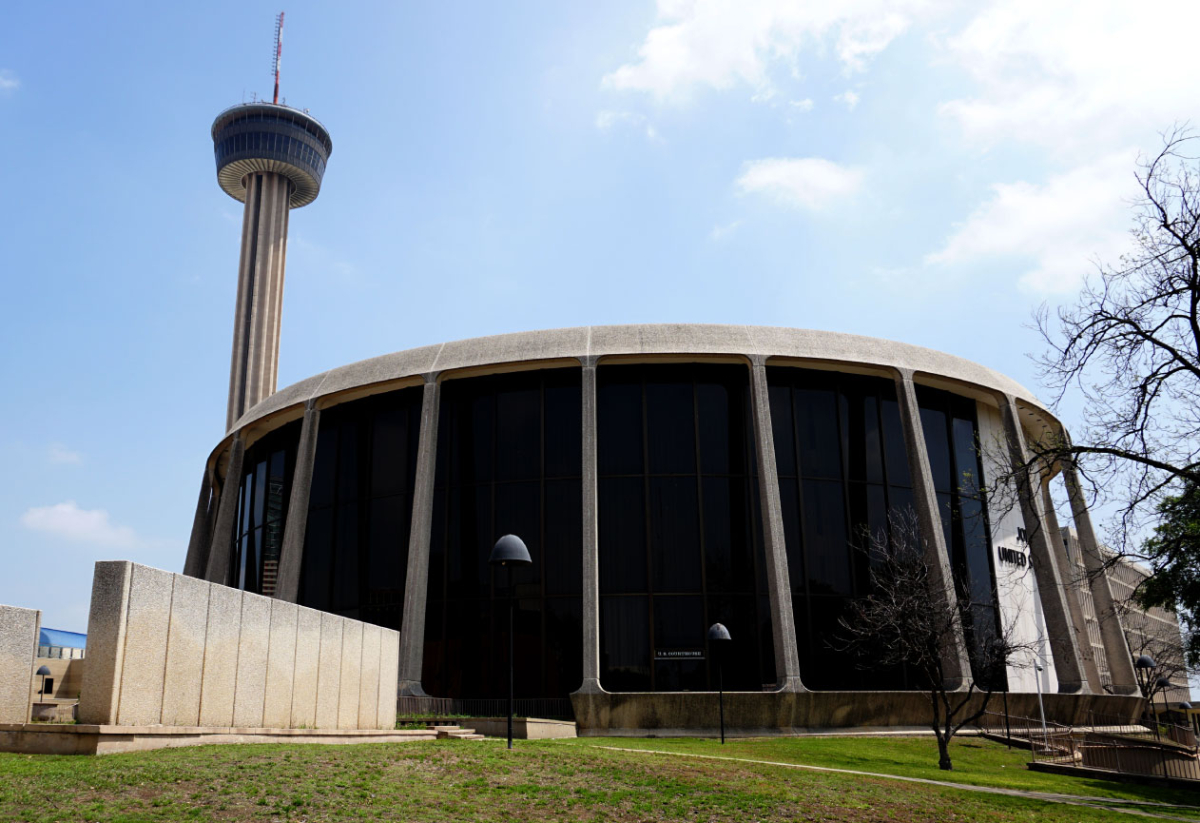
Known initially as Confluence Theatre for Hemisfair ‘68, it housed three movie theaters that could be converted into a single screen. It was said to be the largest screen in the world at the time. It opened as the John H. Wood Jr. U.S. Courthouse in 1975. Then, this location ceased its primary operations as a courthouse in early 2022, as a new modern courthouse was built nearby. Since then, it has periodically been used for private events.
The Sports and Entertainment District involves renovating the building and repurposing it as an event center. The capacity will be capable of a 5,000-6,000 person occupancy load.
Estimated Construction Costs: $100 - $150 million.
Project Timeline: Target near term; however, they need to issue RFQ/RFP to explore a private operator, depending on the availability of funds.
Proposed Funding Sources: Tax credits, private equity, naming rights, public/private partnerships, *HOT.
New Convention Center Hotel / UTSA School of Hospitality (1-5 Year Implementation)
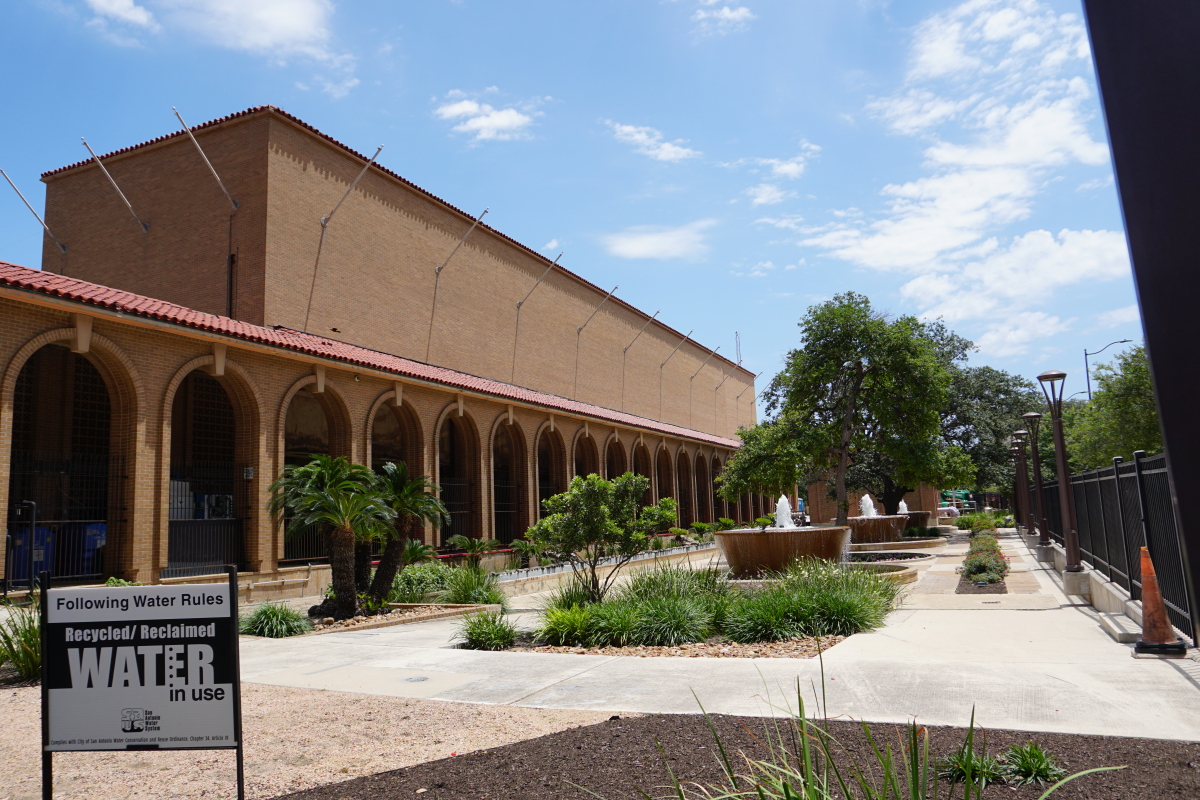
A new Convention Center hotel is being considered as a part of the Sports and Entertainment District. Located between East Market Street and East Commerce Street, on a SAWS chilled water plant site, the hotel would serve convention attendees with up to 1,000 hotel rooms, a ballroom, meeting space, and tenant spaces for food and beverage or retail. The site would also host a Learning Lab for UTSA’s Department of Hospitality and Events Management - Multidisciplinary Studies.
Estimated Construction Costs: $750 million +.
Project Timeline: Dependent on SAWS chilled water plant relocation. Issue RFQ/RFP for hotel brand, dependent on the availability of funds.
Proposed Funding Sources: Hotel operations. Any financial gap may be funded through public incentives.
Federal/GSA Building (1-5 Year Implementation)
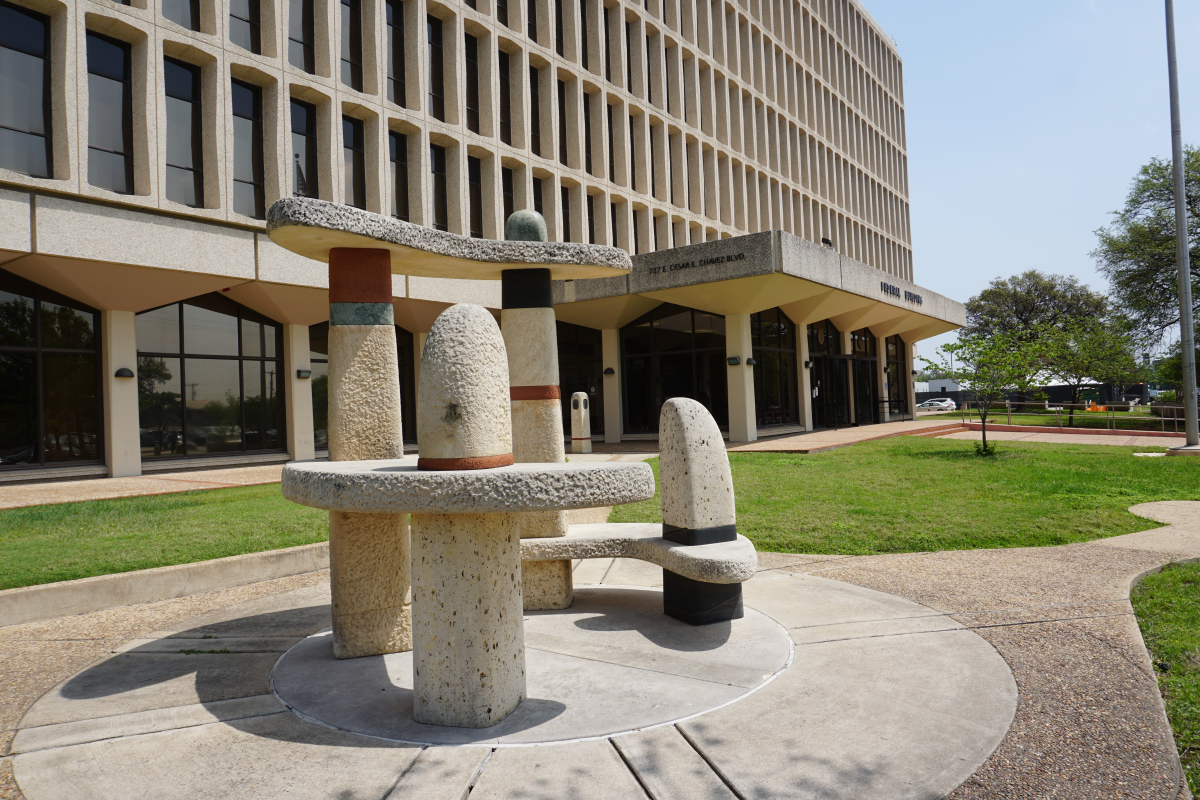
The Federal/GSA Building, located on East César Chávez Blvd., is slated to be acquired by the City of San Antonio, pending the outcome of discussions regarding the Memorandum of Understanding (MOU). They were promised the first right of purchase, and the intended use is currently undetermined/undisclosed.
Estimated Acquisition Cost: Projections in development.
Project Timeline: To be determined.
Proposed Funding Sources: Debt service on bond issuance funded through Mid-Town *TIRZ.
Land Bridge/East Side Connector (1-5 Year Implementation)
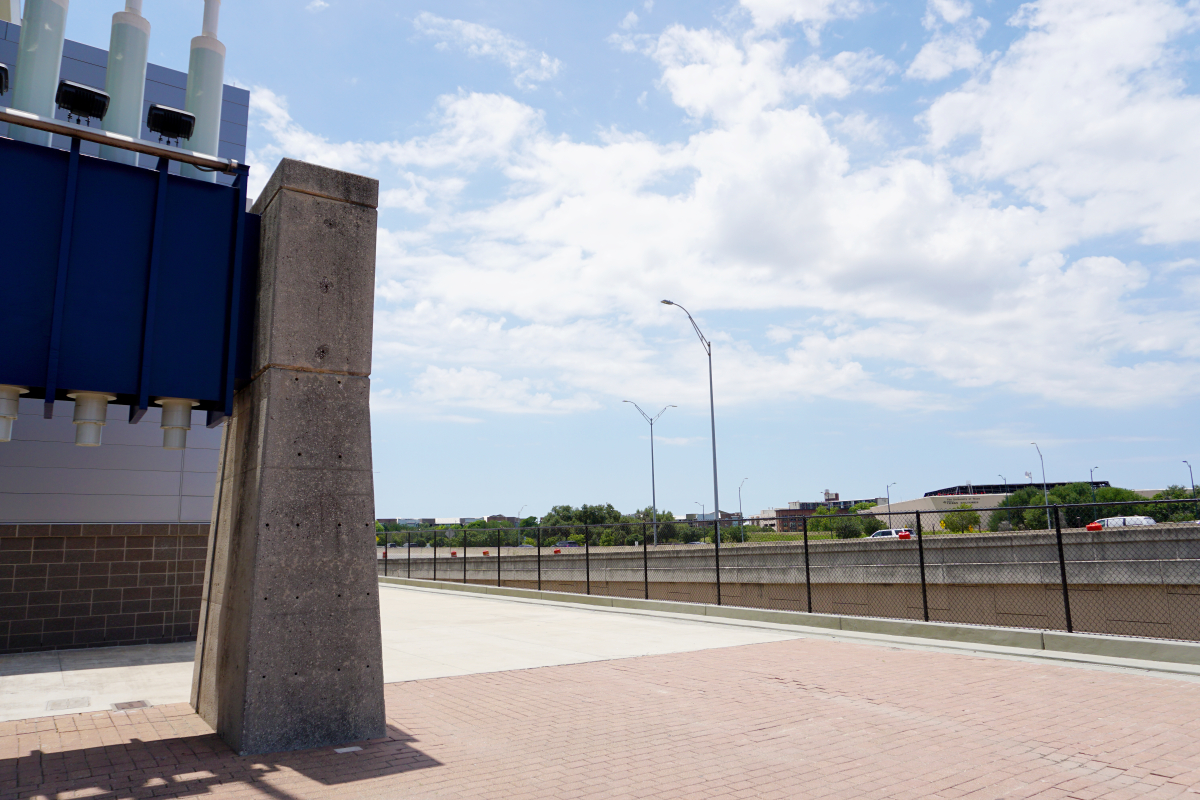
Connecting the Spurs Arena to the Alamodome and capping IH-37 from approximately Market Street to César Chávez Blvd will be a large deck park.
One example of a similar park is Klyde Warren Park in Dallas, which opened in October 2012. Theirs is a 5.4-acre deck park over a recessed eight-lane freeway. It connects Dallas’ Uptown neighborhood to its Arts District and downtown business center. Upon completion, it was a $112 million project.
Estimated Construction Costs: Projections in development.
Project Timeline: Based on available funding.
Proposed Funding Sources: With a planning grant from the Department of Transportation. Federal/State. City general obligation bonds (local match).
Potential Mixed Use Parcels (1- 15+ Year Implementation)
Four sites (18.4, 7.5, 12.1, and 23.9-acre lots) are envisioned to include housing, restaurants/bars, and retail to support the larger Arena, Alamodome, and other facilities/events. They will serve as transition opportunities or buffer zones between the sports venues and residential neighborhoods.
Estimated Construction Costs: Not available.
Project Timeline: Not available.
Proposed Funding Sources: Not available.
Historic Neighborhoods
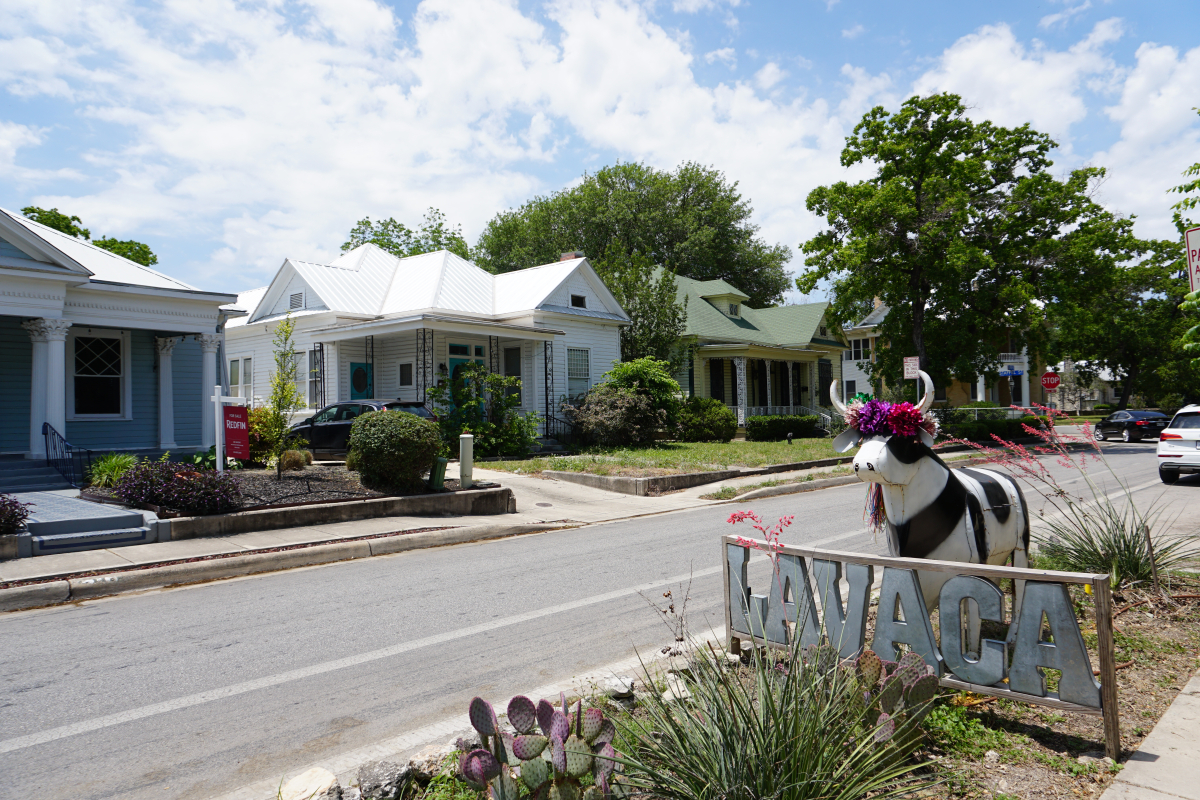
Planners are considering the new Sports and Entertainment District's impact on the adjacent historic neighborhoods of Dignowity Hill, King William, Lavaca, Denver Heights, and other downtown residences. As stated previously, the plan is to buffer the communities from the large crowds at the arenas by utilizing smaller mixed-use parcels.
District Infrastructure Changes
Significant infrastructure upgrades will be necessary to support all the changes being made to the area. These would include transportation improvements, neighborhood improvements, parking, parks, road improvements, and utilities.
Estimated Construction Costs: Projections in development.
Project Timeline: Potential general obligation bond election in November 2025. This could also include a city-wide affordable housing proposition.
Proposed Funding Sources: City capital budget, general obligation bonds, other eligible capital funds, federal/state funding.
You can expect to vote on some of the propositions regarding the Sports and Entertainment District beginning in November 2025. They plan to have significant traction on the funding framework for the anchor projects (Convention Center, hotel, Spurs arena, new courthouse event venue, and reimagined Alamodome) by July 2025.
*Tax Funding Definitions & Sources:
*HOT (Hotel Occupancy Tax):
The City’s HOT rate is 9%, comprising a 7% general occupancy tax and a 2% surcharge for the Convention Center expansion. The City also collects 1.75% for Bexar County. This tax is in addition to the 6% rate imposed by the State of Texas, which must be remitted to the State. For information on the State Hotel Occupancy Tax, visit the Texas Comptroller's website.
Source - CoSA website.
*PFZ (Project Financing Zone):
A designation by a city in Texas that allows it to capture and use incremental hotel-associated revenue from a specific area for qualified projects. This zone, typically a 3-mile radius around a convention center, allows the city to collect the growth in state hotel occupancy taxes, sales taxes, and mixed beverage taxes from hotels within the zone. This revenue can be used to finance qualified projects for up to 30 years.
There is a bill currently being presented at the Texas 89th Legislative Session (HB 2877) authored by Rep. Denise Villalobos. The description of the House Bill states,
"HB 2877 expands the definition of a project financing zone for municipalities using certain tax revenue to fund convention center facilities, multipurpose arenas, venues, and related infrastructure. The bill modifies Section 351.1015(a)(4) of the Tax Code to allow municipalities to designate a project financing zone within a three-mile radius of the center of a qualified project or, in certain cases, within a contiguous geographic area of equal or lesser size. The bill also clarifies that the designation must specify the longitude and latitude of the project center or the exact boundaries of the zone, and that the designation expires no later than 30 years from the date of its creation."
The bill does have opposition, and the 89th Legislative Session ends on June 2, 2025.
*TIRZ (Tax Increment Reinvestment Zone):
Tax increment financing redirects property tax in a geographic area designated as a Tax Increment Reinvestment Zone (TIRZ) to pay for improvements in the zone. It is the real property that is taxed to fund a tax increment fund (TIF) project. The zone is created when the TIF project begins. The cost of improvements to a zone is repaid by the contribution of future tax revenues by each taxing unit that levies taxes against the property. Source - Texas Comptroller
Updates
Community Survey- If you would like to have your voice be heard, there is a community survey offered through the City of San Antonio open through July 2025. www.surveymonkey.com/r/sportsdistrict
If you are interested in receiving updates from the City of San Antonio on the Sports and Entertainment District, you can register on their page on SA Speak Up.